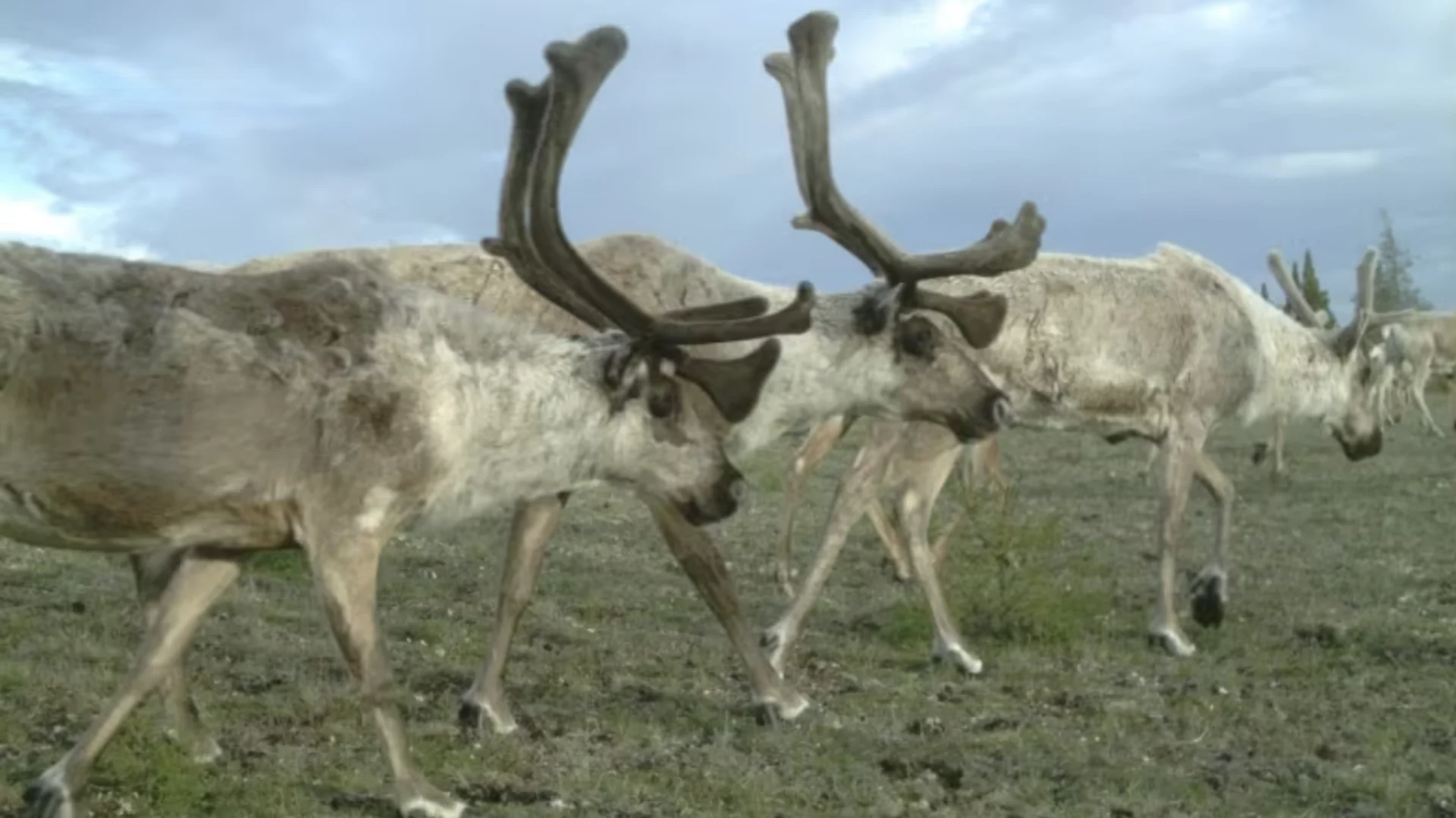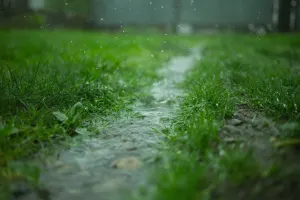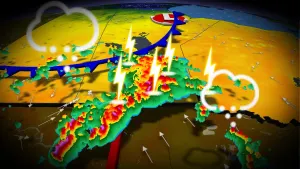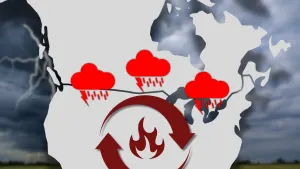
Inside Manitoba's Wapusk, the national park you can't visit
There are two important rules to follow during a stay at Nester One: Always lock the metal gates and never go outside without a shotgun.
The prospect of an up-close encounter with a polar bear is enough to make you heed these rules, should you be lucky enough to make it to this seasonal research camp within a national park that only gets about 225 visitors a year in total.
Nester One, a fenced-in Parks Canada compound with sleeping quarters for about 20 people, is the largest human habitation of any sort within Wapusk National Park, an ecologically and culturally sensitive stretch of northern Manitoba, along the coast of Hudson Bay.
At 11,475 square kilometres, Wapusk is the eighth-largest national park in Canada and the largest contained entirely within one province. Manitoba's better-known and easily visited Riding Mountain National Park is roughly one-quarter the size of Wapusk.
In short, the vast majority of Canadians cannot visit Wapusk. But that's not the point.
Wapusk was originally created to protect winter denning grounds for polar bears. It also encompasses summer calving grounds for caribou and the timber wolves that follow them, enormous tracts of wetlands that provide habitat for waterfowl and uplifted ancient former beach ridges that served as footpaths for Dene, Cree and Inuit for millennia.

In an image captured by a motion-activated wildlife camera, a herd of caribou crosses the tundra in Wapusk National Park. The park protects winter denning areas for polar bears, summer calving grounds for the Cape Churchill herd of caribou and habitat for timber wolves, Arctic foxes, birds and dozens of other animals. (Ryan Brook/University of Saskatchewan)
The remote location of the park, the difficulty of traversing its terrain and the threat posed by the volatile weather, as well as polar bears, however, mean Manitoba's largest national park is also one you are unlikely to ever see first-hand.
"It is a true privilege to be able to come into Wapusk at all, because so few people actually get boots on the ground. A small, tiny proportion fly over in a helicopter and get a few pictures of a bear or a caribou, but we're a chosen few," said Ryan Brook, a University of Saskatchewan wildlife ecologist who is one of the world's foremost experts on the flora and fauna of Wapusk.
"We're lucky to get out here under our research permit to collect data, but also just to spend time on this land here at Nester One camp. This will be about my 412th night sleeping in this camp and this is my second home, and it's incredible."

An aerial view of the tundra near the western boundary of Wapusk National Park. The park is mostly made up of wetlands. (Bartley Kives/CBC)
RELATED: Churchill aims to be the world’s first "polar bear safe community"
When tourists arrive in Churchill, about 40 kilometres west of Wapusk, they sometimes walk into the Parks Canada visitor centre and ask how far the walk is to the park or whether they can stay in the campground.
"Oh geez, I've been asked: 'Where do we store the bears?' That's a funny one," said Russell Turner, an ecosystems scientist in his fourth year with Parks Canada.
That turns into sad and sometimes confused faces when those tourists learn Wapusk is off limits, for both logistical and safety reasons.
"It's very different than your southern national parks. You can't freely just go into the park on your own," Turner said. "You don't want to be camping on the tundra and have a polar bear in your camp, so no campgrounds."
The only infrastructure within Wapusk is a quartet of research camps. Nester One is the largest, established originally to study goose populations. A smaller camp to the west called Nestor Two — American scientists chose the aberrant spelling — has not been used since 2019. To the south sit smaller research camps at Broad River and Owl River, both of which flow east through the park to Hudson Bay.

Parks Canada ecosystems scientist Russell Turner scans for polar bears near the Hudson Bay coast within Wapusk National Park. (Bartley Kives/CBC)
SEE ALSO: On the ground in Churchill - Polar bears fight for survival as ice disappears
The only people permitted to visit these field stations are Parks Canada staff, field scientists and their students and Indigenous elders such as Lizette Denechezhe, a Canadian ranger who spent a week at Nester One earlier this month to provide traditional knowledge and support to students from northern Manitoba and a high school in Baltimore.
"My people have been here for thousands and thousands of years," said Denechezhe, a member of the Northlands Denesuline First Nation at Dahlu T'ua, also known as Lac Brochet.
On the morning Denechezhe was scheduled to leave, a caribou wandered along a beach ridge only 50 metres from the camp. She picked up her long gun and harvested the ungulate, gifting some of the meat to her students and taking the hide home to her community far to the west.
"The caribou was a blessing," she said, explaining she does not chase after animals. "That caribou has to come to you. You don't just go there and hunt it down. You just wait patiently.
"Then when it comes closer and closer to you and that animal is very patient with you, then you take that shot."
The only other place in Wapusk humans can visit also allows tourists to take a shot, albeit of a different sort. Wat'chee Lodge, which operates out of a former navy base on the western edge of the park, offers wildlife photographers a chance to observe polar bears and their cubs for several weeks in late February and early March.
That trip can cost photographers tens of thousands of dollars, if they're visiting from another country and purchasing through a tour company.

Nester One field station, which is designed to sleep 20 scientists, students and parks staff, is the most developed area of Wapusk National Park. The compound is surrounded by a fence high enough to keep polar bears out. No one is permitted outside the gates without the protection of a shotgun. (Bartley Kives/CBC)
DON'T MISS: Why polar bears are walking around with coloured dots on their fur
If Parks Canada ever decides to allow tourists to visit the park itself, the cost of a visit will be a consideration.
"It's incredibly expensive. We all flew in by helicopter and that bill at the end of the day is going to be over $10,000," said the University of Saskatchewan's Brook, referring to himself, a fellow instructor and a group of 19 students.
"So you not only worry about access, but also the privilege. I would hate to see this being only accessible by the very rich."
Brook's students visited the park as part of a two-week, $1,800 summer course that also involved stays in and around Churchill.
Jocelyn Gorniak, a participant in the course, said she did not possess the words to describe the experience.
"It is absolutely amazing. I have never thought that I would ever get here. Every single step you take is breathtaking," she said during a 15-kilometre walk in the park that traversed some of the ancient beach ridges that used to form the coast of Hudson Bay.

University of Saskatchewan student Hanna Weflen poses for classmate Jocelyn Gorniak during a hike within Wapusk National Park. Students, scientists and park staff are among the only people who can visit the interior of the park. (Bartley Kives/CBC)
Most of the park is made up of wetlands, which range from soggy fens patrolled by northern harriers to large ponds frequented by tundra swans, sandhill cranes, Pacific loons and Arctic terns.
The beach ridges are easier to traverse. In a process known as isostatic rebound — a bounce-back effect following the retreat of the heavy glaciers about 7,000 years ago — Wapusk National Park is rising at a rate of roughly one metre every century. It's easy to find purple fragments of mussel shells that used to sit below the surface of the bay.
The uplifted beach ridges, which tend to run north-south through the park, serve as migration paths for the Cape Churchill caribou herd, which numbers somewhere between 1,000 to 3,000 animals.
Grassy mounds on some of the ridges betray the locations of Arctic fox dens. Larger piles of earth suggest the work of Indigenous peoples, who moved earth on the ridges and used chert to create tools.
The only modern signs of humans you're likely to encounter in the park are the remains of rockets fired off from a now-dormant range east of Churchill.
The park is also the only place on earth where polar bears, grizzlies and black bears are all known to interact.

The remains of a rocket fired from the now-defunct Churchill Rocket Range lies on the tundra within Wapusk National Park. Rocket debris is the only garbage in the otherwise pristine landscape along the coast of Hudson Bay. (Bartley Kives/CBC)
All of this is of immense interest to tourists — if only there were a way to keep them safe and the park's natural and cultural treasures intact.
"Access to this park is a huge question, and my immediate selfish response is 'Keep everybody outside. We get it for ourselves.' But of course that's not fair or realistic," Brook said.
"I think access to some scientists and some visitors is appropriate and can be done safely. We've proven that over many, many years of me bringing in [student] groups. We can do that well to a limited scale, but I think the value of leaving it in this pristine nature is worth an infinite amount of money."
This article, written by Bartley Kives, was originally published for CBC Manitoba.









